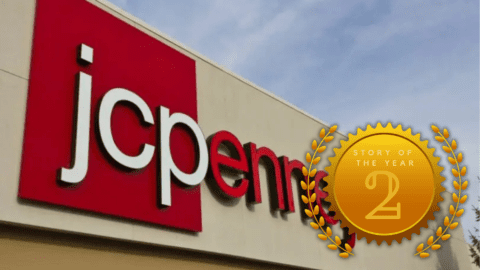This is Part 4 of the Retail TouchPoints series, titled: Retailer-Supplier Collaboration: The New Operational Imperative. Click to access Parts 1, 2 and 3. You can also download the full PDF here.
There are no mass-produced consumers: Product variety, delivery options, vendor sources and other supply chain competencies must satisfy individual customer preferences ― and both retailers and suppliers are responsible for the teamwork that delivers that satisfaction.
To excel in this environment of shared accountability, progressive retail organizations are establishing real-time, web-enabled data sharing portals that facilitate vendor partnerships at a deep level. Today’s Internet portal-based technology tools “enable immediate collaboration between trading partners, with issue drill-down capabilities that eliminate unnecessary administration time on both sides,” stated Katy Keane, President of Koncatenate, a supply chain consulting practice. “The retailer/vendor relationship is strengthened, trust grows and both parties are meeting the goals of supply chain performance and consumer expectations.”
Advertisement
Through cloud-based portals, merchants can share POS data, inventory position by location, and other datasets in real time with vendors, who in turn can ensure items are where they should be to meet imminent demand. “In addition, retailers can create a real-time feedback loop with suppliers regarding logistics and product quality information to maximize supply chain efficiencies,” said Keane. “Otherwise, problems such as late deliveries, damaged products, improperly ticketed items and unreadable bar codes will create product availability issues for today’s empowered consumer. When issues persist, they can create relationship and trust problems between trading partners.”
For companies looking to thrive in today’s increasingly complex retail market, the ability to receive information quickly about potential shipment hazards or changes in supply is essential according to Kevin Permenter, Senior Research Associate at Aberdeen. “Emerging and powerful tools are helping retail and consumer market companies deal with the enormous amounts of data they receive on a daily basis,” he said. “Cloud-based vendor collaboration portals are among the tools paving the way for ultra-fast communication with suppliers. When used properly, these portals allow companies to greatly increase their visibility into purchase orders, which is essential for issues such as tracking, settlements, delivery variances, damaged items and managing overall import operation costs.”
The Neiman Marcus Group and CVS Caremark are among the retailers now employing new vendor collaboration systems. The Neiman Marcus portal allows the merchant group to communicate instantly with a large population of vendors. CVS Caremark utilizes several portal-based collaboration applications, all built with support from Descartes Systems Group.
Collaboration: The Supply Chain Mantra Of 2013
Retail companies that are dedicated to collecting and monitoring supply chain data in real-time, and collaborating across departments, are able to make faster and more profitable decisions. “When retailers and suppliers work together toward a common goal, every single business process can be enhanced, from product development to capacity planning,” said Russ Hill, Senior Director, Retail, Consumer Products and Wholesale Distribution Industry Market, for SAP. “Therefore, the mantra for retail and supply chain executives during 2013 will be ‘Collaboration, Collaboration, Collaboration!’”
Today’s smart retailers are looking for robust collaborative software and enhanced supply chain visibility tools that better analyze large quantities of data. With that data in hand, merchants can better identify customers’ buying patterns. Along with predictive analytics, real-time processing, visualization software and a solid strategy that pulls these elements together, said Hill, these systems are necessary for developing and maintaining the industry coalitions that lead to new ways of driving more value to customers.
{loadposition MWIAA} “Every customer interaction and product move through a distribution network can be measured and used to refine pricing strategies, update inventory decisions and tailor customer incentives on websites, email and mobile devices,” Hill reported. For example, by employing cross-enterprise communications, multi-level collaborative planning and more precise tracking technologies, retailers and manufacturers can improve forecast accuracy, inventory visibility, and time-phased replenishment.
Cloud-based collaboration is delivering significant results for retailers, as noted in a recent white paper sponsored by 1010data and published by Retail TouchPoints. Merchants are reporting “improvements in in-stock percentage of 2% to 8% for products in stores, as well as inventory reductions of 10% to 40% across the supply chain.”
Supply Chain Data: A New Source Of Revenue
Vendor portal technology delivered in the cloud also presents retailers with an opportunity to profit by selling the data to others. For example, the Analytical Dataspace platform from 1010data allows retailers to vend numerous levels of access to supply chain data and reports to drive new revenue streams.
According to the white paper, titled: Winning With Data Sharing, large retailers lay claim to enterprise data warehouses brimming with transactional and sales information. By charging suppliers a fee per category for access, retailers are transforming their data warehouses from a cost center into a profit center. Suddenly, a dark server room stockpiled with massive volumes of information can become a brand new source of revenue for forward-thinking companies in competitive markets.
As part of the Supplier Portal and Analytics portfolio from Manthan Systems, retailers have the option of monetizing their data through various supplier subscription models. For example, with the provider’s ARC Vendor Insights solution, a retailer can allow suppliers access to key insights on their products business by key metrics, such as SKU, day, store, category, promotion and more ― for a fee.
In addition to data monetization, retailers can leverage the vendor insight tool to enhance business process efficiency, transparency, business profitability and business intelligence; improve the accuracy of master data; and deliver efficient, more personalized promotions.
“In today’s highly connected and competitive business landscape, the strong, cooperative relationships developing between retailers and suppliers quickly are advancing into areas of collaborative planning and forecasting (CPFR); vendor managed inventory (VMI); collaborative product and assortment development; pricing strategies; promotion planning; and customer retention strategies,” stated Sameer Narula, VP, Solutions Management for Manthan Systems. “As they do, technology innovations and the ready availability of clean data are resulting in lower costs and faster deployment of collaboration systems, and enabling wider use among businesses both large and small.”
Shelf-Level Collaboration
Today’s advanced retailer-supplier collaboration efforts are delivering results at the shelf, stated Scott Welty, Global VP, Retail Industry Strategy, JDA Software. “New technologies and processes enable both retailers and manufacturers to respond with speed and agility to fluctuations in consumer buying patterns. The increased power and market leadership of today’s collaborative partners mark the beginning of a new era in retail environment today: Connecting the extended supply chain all the way down to the retail shelf.”
Retailers and suppliers that collaborate at the shelf level can improve on-shelf product availability; remove unnecessary inventory across enterprises; and set new strategies that leverage cost savings across the entire value chain, said Welty. Partners also can move from one-sided metrics, such as sell-to, to mutually beneficial metrics, such as sell-through.
Shelf-level collaboration, according to Welty, allows partners to:
- Quickly diagnose and remedy execution problems such as out-of-stocks, available stock not on shelves and promotions not backed by centrally analyzed data;
- Obtain early alignment on demand plans, allowing supply to be matched and business objectives to be synchronized; and
- Understand the impact of decisions, in near real time, on store sales and financial results for the manufacturer and retailer alike.
Analyzing Results Of Collaborative Decisions
As retailer-supplier partnerships continue to strengthen and better serve today’s demanding customers, advances in cause-and-effect analyses help the partners understand which new ideas work best, which ones don’t and which can be fine-tuned to increase profits. Together they can test new strategies and rapidly evaluate their impact.
Analytical software such as Test & Learn from Applied Predictive Technologies allows retailers and suppliers to de-risk new ideas and increases the pace of innovation. “Improved data and analytic methods are now available to facilitate a shared, objective understanding of the impact of any joint initiative,” reported Patrick O’Reilly, President of APT. “They allow retailers and suppliers to cut through the noise and day-to-day volatility in the retail environment to determine whether their programs worked, where they worked best, and how to improve them for future rollouts.”
For example, retailers traditionally concentrate on optimizing performance of product categories, while manufacturers focus on brand performance. Both share the goal of selling more product to more consumers, more profitably, said O’Reilly, but their dissimilar orientations have led to misaligned and even adversarial trade relations. “These differences are melting away with robust, mutually embraced analytic processes and systems that help both parties understand how any new idea or program affects their profits.”
Consumer empowerment, economic challenges and new retail trends likely will continue to squeeze supply chain processes even further in years to come. As they do, today’s more candid and collaborative retailer-supplier partnerships are alleviating these pressures, maximizing ROI for both entities, and transforming a once optional alliance into the new operational imperative.
Click here to download a complete PDF of the four parts of the Retail TouchPoints Retailer-Supplier Collaboration series.














